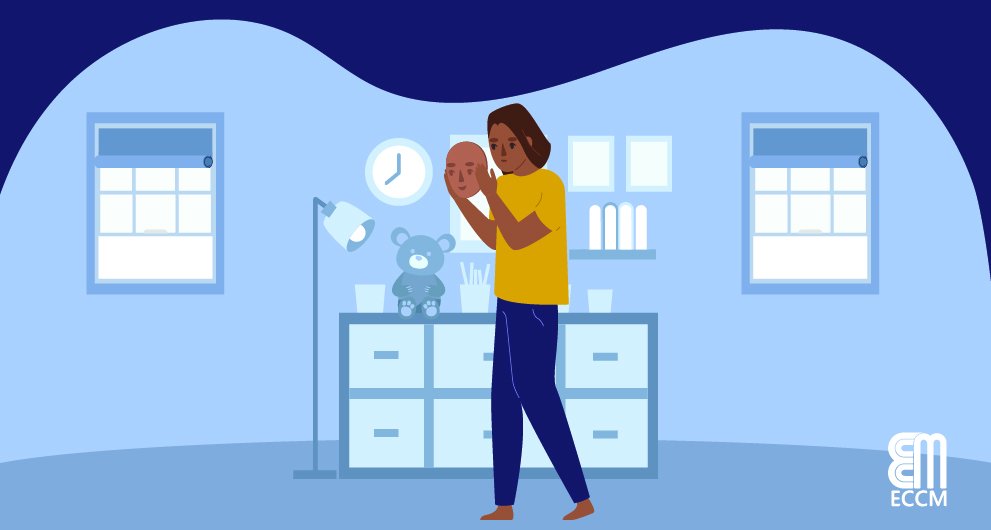A Guide to Autistic Masking
In a world that often prioritizes conformity, many individuals on the autism spectrum find themselves engaging in a behavior known as autistic masking. This complex phenomenon involves suppressing one's natural traits to blend in with neurotypical peers.
While masking can help one navigate social situations, it often comes at a significant emotional or psychological cost. In this guide, we will explain everything you need to know about autistic masking, including its impact and how to support individuals in embracing their authentic selves.
What is Autistic Masking?
Autistic masking (also known as autistic camouflaging) refers to the conscious or unconscious effort by people on the autism spectrum to minimize autistic traits. This is done to “fit” the neurotypical patterns of those around them.
This behavior is often a coping mechanism to navigate social interactions, avoid judgment, and reduce the risk of social exclusion. However, the effort required to maintain this facade can be both exhausting and detrimental to one's health.
How Do Autistic People Mask?
Mimicking Social Cues and Behaviors
One of the most common forms of masking involves observing and imitating the social behaviors of neurotypical individuals. This may include adopting typical speech patterns, gestures, or mannerisms. For instance, an autistic person might learn to laugh at jokes they don't find funny or nod in agreement during conversations to appear engaged.
Suppressing Stimming Behaviors
Stimming, or self-stimulatory behavior, is a common way for autistic individuals to self-regulate and manage sensory input. Actions like hand-flapping, rocking, or repeating certain sounds are done to provide comfort in times of stress. To avoid standing out, many autistic people suppress these behaviors in public, which leads to increased sensory overload.
Forcing Eye Contact or Facial Expressions
Eye contact is often indicative of effective communication in a neurotypical person. Autistic individuals may force themselves to maintain eye contact or mimic appropriate facial expressions — even if it feels uncomfortable or unnatural. This effort to conform can be mentally draining and may detract from their ability to focus on the conversation itself.
Why Do Autistic People Mask?
Autistic masking is typically a response to social pressures that demand conformity. The reasons behind this behavior are rooted in the desire for acceptance, the need to navigate social settings, and the fear of negative repercussions like discrimination.
Social Pressures and Expectations
From a young age, individuals on the autism spectrum are frequently exposed to societal norms that prioritize neurotypical behaviors. These norms dictate how one should communicate, behave, and interact in social situations.
This can make them feel compelled to mask their true selves to meet these expectations. However, given the natural differences in their social and sensory processing, doing so is often very challenging.
Desire for Acceptance and Inclusion
The desire to be accepted is a fundamental human need. For autistic individuals, this often means adopting behaviors that help them blend in with their peers.
In school, this might involve participating in group activities in a way that mirrors their classmates, even if it feels uncomfortable. In the workplace, it could mean adhering to social rules to avoid standing out. Autistic masking essentially becomes a tool to gain social acceptance and build relationships.
Fear of Bullying, Discrimination, or Misunderstanding
Unfortunately, the fear of being misunderstood or discriminated against is a significant motivator for autistic masking. Many autistic individuals have experienced negative reactions to their natural behaviors, leading them to hide their true selves to avoid further harm.
Do All Autistic People Mask?

It's important to recognize that not all autistic individuals engage in masking. The decision to mask (or the extent to which one does so) varies widely among those on the spectrum. Several factors influence whether an individual chooses to mask their autistic traits, including personal experiences and the level of support they receive from their immediate environment.
Personal Experiences
One of the primary factors determining whether an autistic person masks is their past experiences with societal reactions. Individuals who have faced negative responses (i.e. past bullying) are more likely to engage in autistic masking as a protective mechanism.
Conversely, those who have experienced acceptance or understanding may feel less compelled to hide their true selves. Personal resilience also plays a role here; some individuals may choose to embrace their autistic traits openly, regardless of societal pressures.
Support from Family, Friends, and the Community
A strong network of family, friends, educators, and employers can provide a safe space where the individual feels valued for who they are. This supportive environment reduces the pressure to conform to neurotypical norms and allows for more authentic self-expression. On the other hand, a lack of support or a hostile environment will increase the likelihood of autistic masking.
For instance, teachers who are knowledgeable about autism and who foster an inclusive classroom make a real difference. Similarly, workplaces that prioritize diversity can help autistic employees feel comfortable being themselves.
When Does Autistic Masking Become Unhealthy?
While masking can be useful in certain situations, it may harm physical or mental health when it becomes a necessity. The effort to consistently hide one's true self potentially leads to:
- Increased Anxiety and Stress Levels: Autistic individuals may constantly worry about being "found out" or judged, which can create a persistent state of tension and unease.
- Exhaustion: The need to suppress natural behaviors, mimic social cues, and maintain a facade is incredibly draining. Over time, this constant effort can lead to physical and emotional exhaustion, making it difficult to maintain overall well-being.
- Burnout: Autistic masking contributes to burnout, which manifests as extreme fatigue, reduced ability to function, and a sense of detachment from one's surroundings.
- Depression: Feelings of sadness, hopelessness, or a lack of interest in previously enjoyed activities are common symptoms. Depression can severely impact an individual's quality of life and may require professional intervention.
- Identity Confusion: Autistic individuals may struggle to understand who they are outside of their masked persona, leading to a sense of disconnection from their authentic selves.
Autistic Masking Support: Help is Available
Seeking out the right autism support is crucial for individuals who find themselves struggling with the negative impacts of masking.
Counseling/Therapy
Professional support from counselors or therapists who specialize in autism spectrum disorder (ASD) can be incredibly beneficial. These professionals will provide strategies to manage anxiety, stress, and other mental health challenges associated with masking.
For example, occupational therapy offers practical support in managing sensory sensitivities or developing social skills in a way that feels authentic. These therapists work with the person to create an Individual Support Plan (ISP) and personalized strategies that reduce the need for masking.
Building a Support Network
Connecting with an autism support group establishes a sense of community and understanding. Here in Pennsylvania, many local organizations offer support, resources, and social opportunities for autistic individuals and their families.
Online communities can also be valuable resources. Platforms like the National Autistic Society and Talk About Autism are spaces where autistic individuals or their caregivers can share experiences, seek advice, or find support from others who understand their challenges.
Advocating for Accommodations
Advocating for necessary accommodations at work or school is essential. Tips for discussing needs include being specific about the accommodations required, providing documentation if needed, and emphasizing how these adjustments will improve performance and well-being.
Note that employers and educators are often legally required to provide reasonable accommodations under laws such as the Americans with Disabilities Act (ADA).
Promoting Self-Acceptance
Of course, encouraging self-acceptance is a vital part of the journey. Embracing one's unique identity without feeling pressured into conformity can lead to a more fulfilling, authentic life. Celebrating strengths and surrounding oneself with supportive peers will foster a more positive self-image, reducing the need for consistent autistic masking.
Support Your True Self with ECCM
At ECCM, we are dedicated to helping those with autism achieve healthier, happier lives by embracing who they are. Our network of dedicated professionals is here to help with tailored support for every stage of your personal journey. Contact a representative today to get started!

